Everything you need to know about bionic arms & hands. Continuously updated, this page is your one-stop repository for all the latest information on upper-limb devices, technologies, and research.
What’s On This Page?
- What is a Bionic Arm?
- How Bionic Hands Function
- User Control Systems
- Surgical Procedures
- Current Bionic Hands
- Current Partial Hand or Finger Options
- Current Upper-Limb Electric Terminal Devices (ETDs)
- Current Above-the-Elbow Solutions
- Latest Research
- User Satisfaction Reports
- Real Bionic Stories
- Related Information
What is a Bionic Arm?
A bionic arm is an electromechanical device that attaches to the human body and attempts to replicate the functionality of a natural arm or hand.
It always consists of a bionic hand or partial hand and, depending on the level of amputation, may also include a powered wrist, elbow, and/or shoulder.
For example, here are the three configurations available for the Luke Arm System from Mobius Bionics:
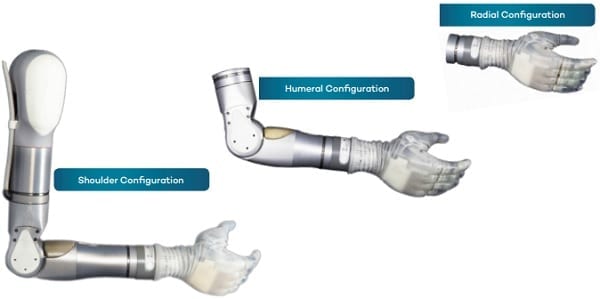
Note, this particular line of devices always includes a powered wrist but this is optional or not available for other devices. Also, in some cases, the hand may be replaced with a powered hook or clamp.
How Bionic Hands Function
This section describes the limits of bionic hand dexterity beginning with the mechanical design of the fingers and working backward.
The core mechanical function of a human finger is to open and close. This is replicated in a bionic finger using a design like this:

Source: https://doi.org/10.1016/j.ohx.2020.e00100
A battery-powered motor drives a gearing system to move the main MCP joint, which then moves the second and third joints via a bar linkage system. Note, there are many variations of this, such as using pulley systems to simulate tendons instead of bar linkage systems.
The key feature in this type of design is that there is only one independent joint: the MCP joint (main knuckle). The other two joints automatically follow that joint’s lead, producing the following fixed pattern of motion:
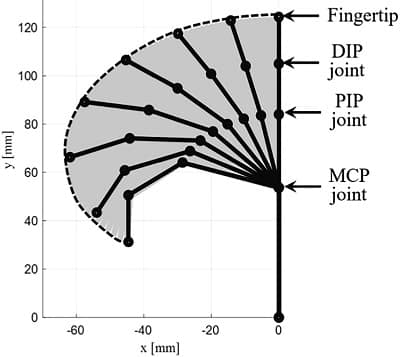
Source: https://doi.org/10.1016/j.ohx.2020.e00100
By comparison, natural fingers can move the middle or PIP joint independently and the DIP joint quasi-independently. Additionally, natural fingers can spread out and twist and turn in a myriad of combinations.
The movement of a natural thumb is even more complex. In addition to opening and closing, it can rotate down and slightly outward to touch the entire underside of any finger and even parts of the palm. This allows natural hands to grasp objects of any shape.
Here is a diagram of a bionic thumb from the early work on one of the more recent entries into the bionic hand market, the Psyonic Ability Hand.

Despite its mechanical complexity, this type of thumb still has many limitations. Yes, it can position itself to become an opposing force for many grips but it lacks the dexterity of a natural thumb.
This brings us to our main point for this section: bionic hands are impressive feats of engineering but they are much simpler than natural hands. In one respect, this hardly matters because they can still perform a wide variety of tasks, as demonstrated in this video:
However, do not expect them to match the dexterity of natural hands. A better way to assess a bionic hand is its usefulness, which is determined mostly by its user control system.
User Control Systems
When you move a natural limb, your brain sends nerve signals to the muscles, which in turn move the limb.
When a limb is amputated, the brain still sends these signals even though some of the muscles are no longer there to react to them.
The general concept behind bionic user control systems is to intercept the brain’s signals and convert them into commands for the bionic device.
There are multiple ways to do this for bionic arms & hands. For an overview of control system options, see bionic hand control systems. For details on each option, click the relevant link below:
- Myoelectric Direct Control
- Myoelectric Pattern Recognition
- Myoelectric Control with Surgically Embedded Sensors
- Magnetomicrometry (MM)
- Mechanomyogram (MMG) Control
- Advanced Neural Interfaces
The performance of some control systems can be significantly enhanced by surgical procedures.
Surgical Procedures
For thousands of years, amputations served only one purpose: to sever a damaged or diseased limb. Little thought was given to preparing the residual limb for an eventual prosthesis.
This situation has changed dramatically over the past two decades. Surgeons now have procedures to:
- reassign severed nerves for reduced limb pain and improved muscle control in the residual limb;
- reconnect severed muscle pairings to restore proprioception;
- implant myoelectric sensors to improve the detection and interpretation of muscle movements;
- attach electrodes to nerve bundles to facilitate sensory feedback;
- insert a metal rod in the upper arm bone (humerus) to act as a superior prosthetic connector and eliminate the need for a socket;
Indeed, these procedures have advanced to the point where they should now be considered by new and existing amputees alike. To learn more, see Surgical Techniques That Improve the Use of Bionic Limbs.
Current Bionic Hands
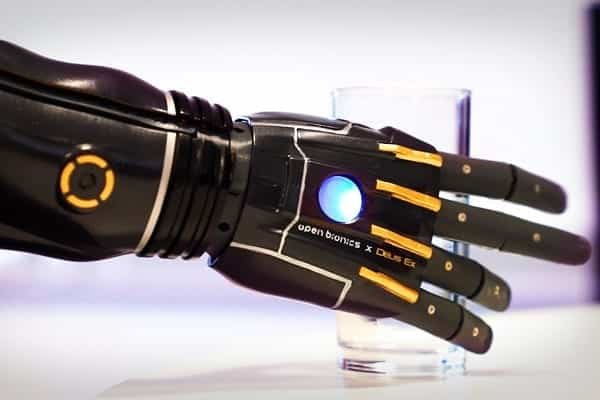
Available Models
The following is a list of the models for below-the-elbow bionic arms & hands either already on the market or soon to be (presented alphabetically). Each links to its own page for more specific details:
- Aether Biomedical Zeus Hand
- Atom Limbs Atom Touch
- BionIT Labs Adam’s Hand
- BrainRobotics Prosthetic Hand (2 models)
- COVVI Nexus Hand
- Makers Hive KalArm
- MaxBionic MeHand
- Mobius Bionics Luke Arm
- Motorica Manifesto Hand
- Open Bionics Hero Arm
- Ossur i-Limb (3 models)
- Ottobock bebionic Hand
- Ottobock Michangelo Prosthetic Hand
- OYMotion OHand (2 models)
- Psyonic Ability Hand
- Robo Bionics Grippy
- TASKA Prosthetics TASKA Hand
- Unlimited Tomorrow TrueLimb
- Vincent Systems Vincent Evolution
The Atom Touch and Luke Arm are modular systems that can be configured for any level of amputation below or above the elbow. The Luke Arm can use a full range of control systems while the Atom Touch relies on a highly advanced, propriety control system driven by artificial intelligence.
The Hero Arm and TrueLimb are complete below-the-elbow solutions that offer proprietary control systems only.
The rest of the bionic hands on this list are designed for use as components in both below- and above-the-elbow solutions, though some have not yet been tested/approved for above-the-elbow use. These hands generally use either myoelectric direct or myoelectric pattern recognition control systems, though Grippy uses Mechanomyogram (MMG) sensors.
Some devices use only proprietary control systems, while others can be used in combination with third-party pattern recognition systems like Ottobock Myo Plus, Coapt Engineering Gen2, or IBT Sense.
Affordability
Of the bionic hands currently on the market, the most affordable are the TrueLimb from Unlimited Tomorrow, the Hero Arm from Open Bionics, Grippy from Robo Bionics, and KalArm from Makers Hive. In their simplest configuration (least complicated residual limb), the final price for these three devices can range from $8,000 to $20,000 US, including prosthetist fees, where applicable.
By comparison, the most expensive hands can cost as much as $100,000 US.
For more information, see our Bionic Hand Price List.
Current Partial Hand or Finger Options
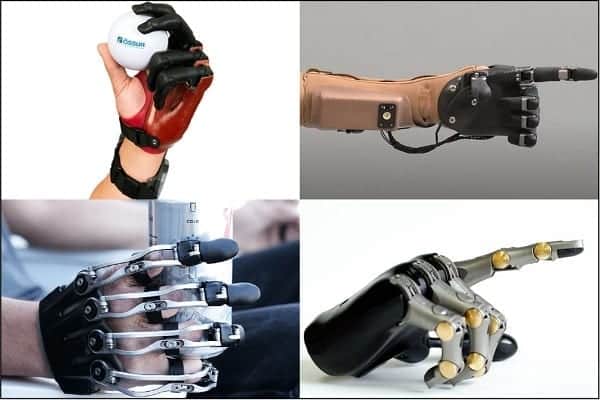
Nearly 2/3 of upper-limb amputations involve finger or partial hand loss. This equates to millions of people around the world who are missing fingers, parts of fingers, or a part of their palm.
Both Ossur and Vincent Systems have created excellent bionic partial-hand prostheses but these are not well-suited for heavy loads or challenging environments. They’re also quite expensive. To address these deficiencies, our list of articles on partial-hand devices includes the best non-bionic (i.e. strictly mechanical) options:
In keeping with our goal of helping you stay informed, we have also created a Current Partial Hand Prosthesis Options summary page. We will constantly update this page so you can use it as a convenient list of the latest partial hand devices.
Current Upper-Limb Electric Terminal Devices (ETDs)

The following is a list of ETDs currently on the market:
- Fillauer MC ProPlus Hand
- Fillauer ProPlus MC ETD2
- Fillauer MC ProPlus ETD
- Fillauer MC Standard ETD
- Motorica INDY Hand
- Ottobock AxonHook
- Ottobock Greifer
- Ottobock MyoHand VariPlus Speed
- Ottobock SensorHand Speed
Ottobock’s AxonHook can only be used within the AxonBus System, meaning it is only an alternative to Ottobock’s Michelangelo Hand. Fillauer’s MC Standard ETD can only be used with an Ottobock control system or an Ottobock electric elbow. The rest of the ETDs listed above can participate in above-the-elbow solutions consisting of components from many different manufacturers.
Affordability
Ottobock’s ETDs sell for between $15,000 and $30,000 US for a complete below-the-elbow solution.
We currently lack price information for all Fillauer ETDs but suspect that they are competing in that same price range.
Given the increasing number of multi-articulating bionic hands now appearing in the $10,000 to $20,000 US price range, we would like to see the same happen with ETDs. We say this because, in general, the vast majority of people with upper limb differences require both a bionic hand and an ETD to address their complete set of daily tasks, so we have to find a way to make the combined cost of these two devices more affordable.
Current Above-the-Elbow Bionic Solutions

The following is a list of complete above-the-elbow bionic solutions either already on the market or soon to be (presented alphabetically). Each links to its own page for more specific details:
Note that, because of their modular nature, both of these devices can also be used for below-the-elbow solutions.
The next list consists of electric elbows, which are not just elbows. They also provide connectors and control centers for other components such as electric wrists and bionic hands or other terminal devices. Put more plainly, an electric elbow is not a complete above-the-elbow solution. However, it is your starting point to piece together such a solution if you do not wish to use one of the complete solutions listed above.
- Steeper Espire Elbow
- Motion Control Utah Arm
- Ottobock DynamicArm
- Ottobock ErgoArm
- College Park Boston Digital Arm (this has been discontinued)
Note, we are lacking solid information on the net cash price of these elbows to end-users for a typical solution. If you have this information, please share it with us through our contact form.
Finally, here is a subset of the bionic hands that can be used currently when piecing together an above-the-elbow solution using components from different manufacturers. By “currently”, we mean that they have been approved for use with at least one bionic elbow:
- Aether Biomedical Zeus Hand
- BionIT Lab Adam’s Hand
- COVVI Nexus Hand
- MaxBionic MeHand
- Ossur i-Limb (3 models)
- Ottobock bebionic Hand
- Ottobock Michangelo Prosthetic Hand
- Psyonic Ability Hand
- TASKA Prosthetics TASKA Hand
- Vincent Evolution
The KalArm, Grippy, and OHand have been designed for eventual use in above-the-elbow solutions but have not yet been approved for use with at least one bionic elbow.
You may be wondering about wrist components and/or shoulder components. We do not yet have a sufficient grasp of these components to lay out the options but we do plan to do so in the future.
Affordability
The big problem with above-the-elbow bionic solutions is cost. The cost for the Atom Touch is between $50,000 and $100,000 US depending on the configuration. The cost of the LUKE Arm is similar.
Even electric elbows can sell for more than $50,000 US for top-of-the-line models, and that’s before you’ve added a wrist and hand or another bionic terminal device.
Unfortunately, this price tag exceeds the budget of most amputees. However, we should not be discouraged by this. It takes a while for new technologies to trickle down into the broader market. And then it takes even longer (i.e. the effect of market forces) to significantly reduce costs. We just have to do what we can to accelerate these processes.
Latest Research Articles for Bionic Arms & Hands

Surgical Techniques That Improve the Use of Bionic Limbs
This document helps amputees monitor all current and future surgical techniques that may improve the use of bionic limbs and/or reduce pain.

Which Myoelectric Pattern Recognition System is Right for You?
We are entering a period of bionic arm & hand development that is both exciting and potentially confusing. This article is meant to clarify the most recent options for pattern recognition systems.

Myoelectric Pattern Recognition for Bionic Arms & Hands
If you want to avoid surgery, combining myoelectric skin sensors with pattern recognition is currently your best option.
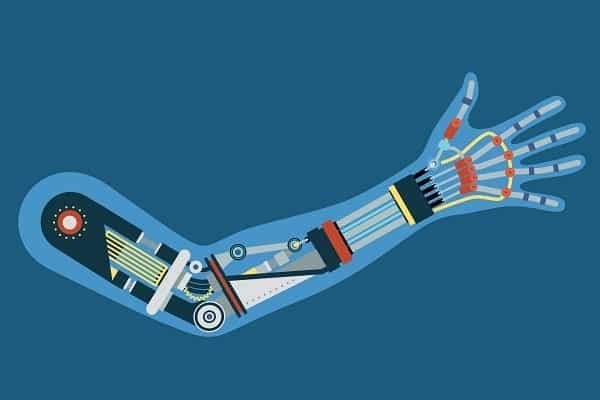
Bionic Hands: Finding the Right Myoelectric Control System
Bionic hands hold the promise of greatly restored capabilities but their myoelectric control systems are not as reliable as they need to be.
User Satisfaction Reports for Bionic Arms & Hands

Bionic Limb User Satisfaction Statistics for 2021
Here is what our User Satisfaction Surveys have taught us about bionic limbs as of December 31, 2021.

Bionic Limbs — First Impressions From Our User Satisfaction Surveys
Check out our early impressions from the results of our User Satisfaction Surveys on bionic limbs. Results for individual devices to follow.
Real Stories for Bionic Arms & Hands

Bionic Feats: Heavy-Duty Hand Work
Bionic hand technology is improving all the time but it can still be fragile. In these videos, we show you examples of far more rugged use.
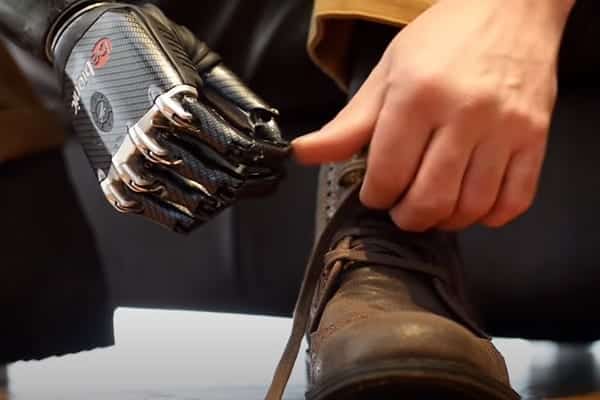
Bionic Feats: Tying Shoelaces
Tying shoelaces is a real challenge for bionic hands because it requires significant dexterity. For a hand to truly play its part in this task, it should have good hand speed and the ability to switch grips with ease.

Bionic Feats: Let There Be Music
Some of the amputees playing music in these videos are using bionic devices; others are not. Either way, they’re incredibly inspirational!

The Power of Bionic Limbs to Change Lives
We are entering an era where bionic limbs will eliminate many of the disability aspects of having a limb difference. This post shows some early examples.
Related Information
For a comprehensive description of all current lower-limb technologies, devices, and research, see our complete guide.
